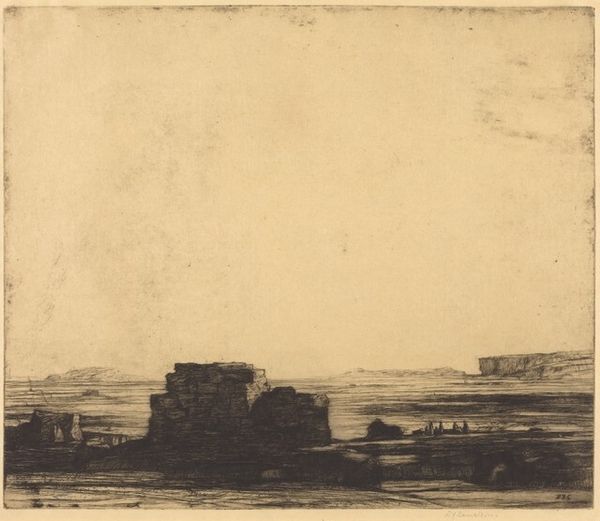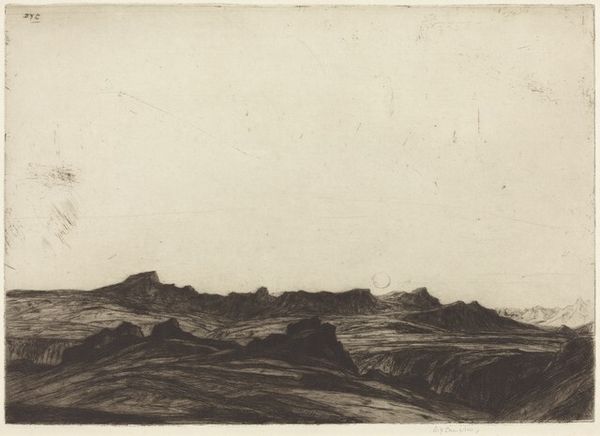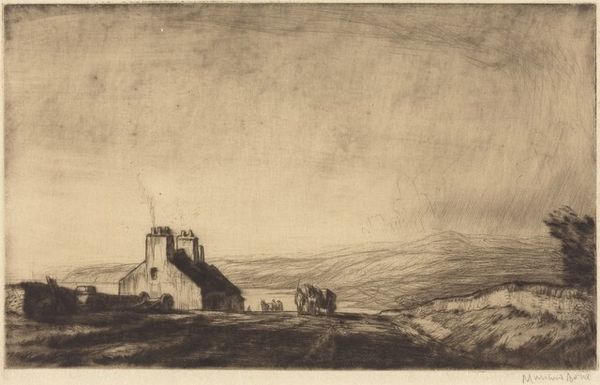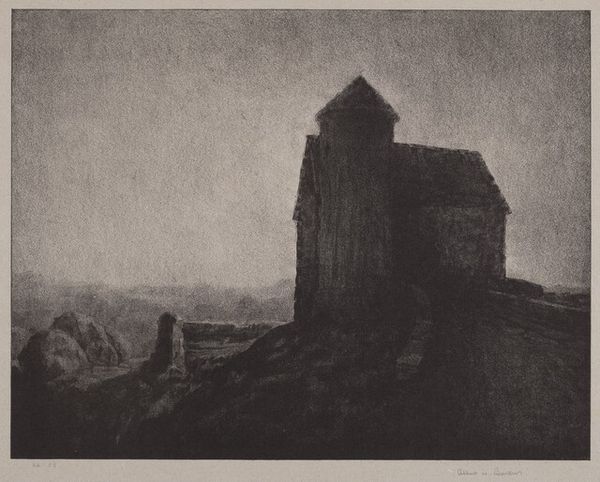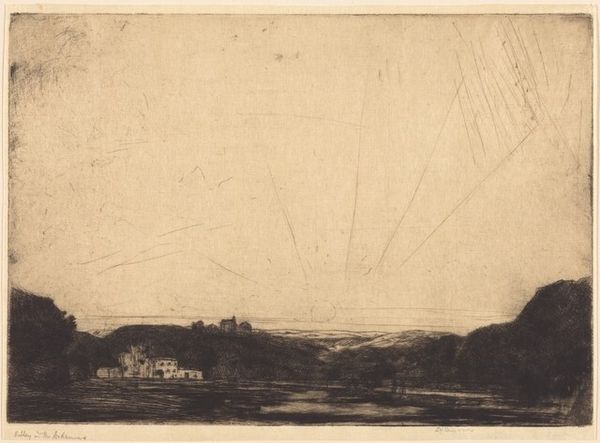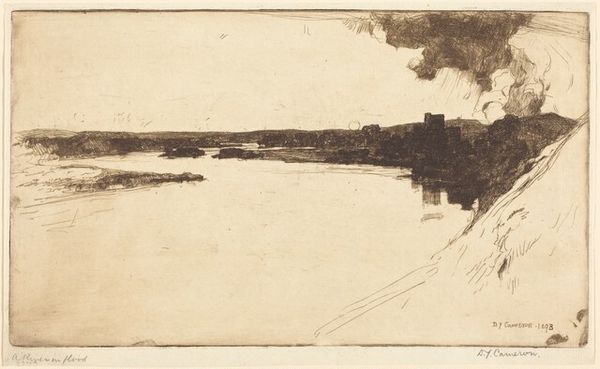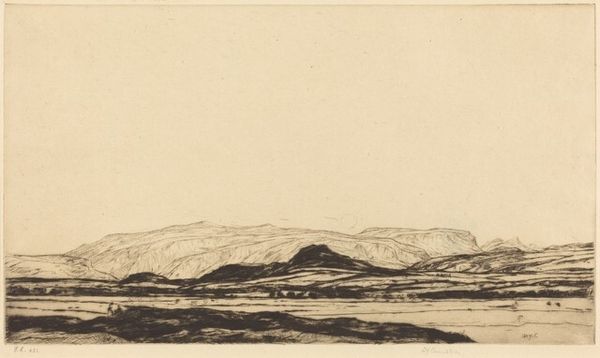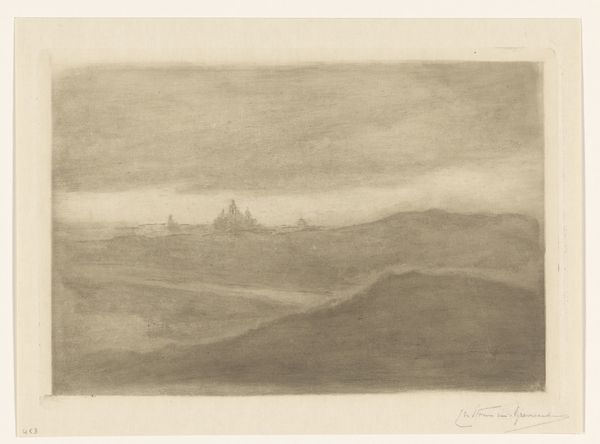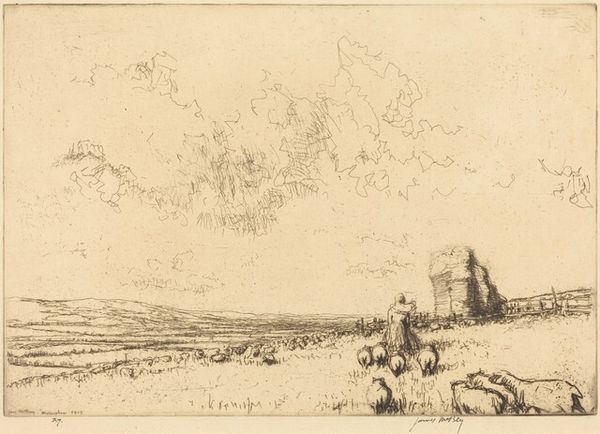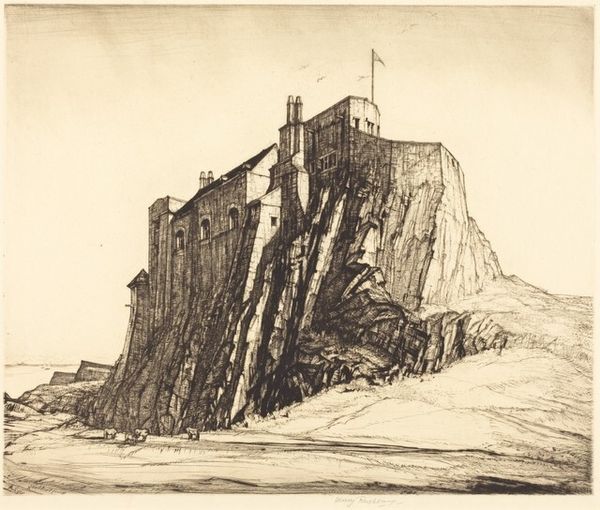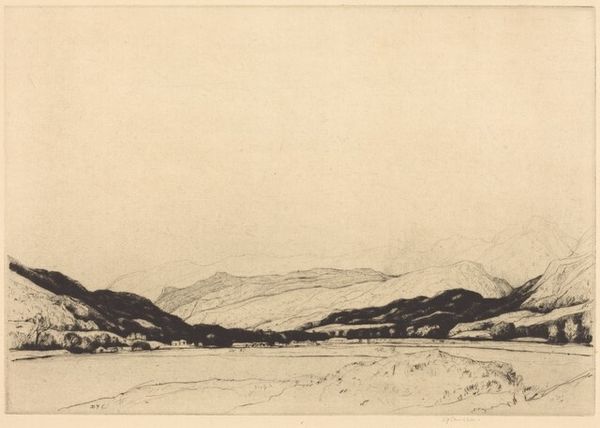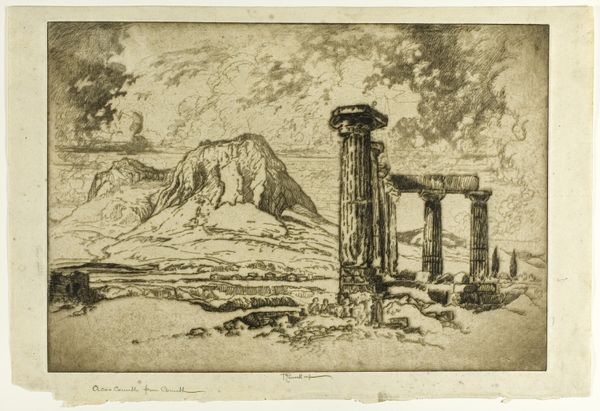
print, etching
# print
#
etching
#
landscape
#
line
Copyright: National Gallery of Art: CC0 1.0
Editor: This is "Killundine," an etching by David Young Cameron, created in 1929. It feels quite stark, almost severe, because of the strong lines. The heavy use of line gives so much texture. What are your thoughts about this piece? Curator: For me, the crucial element here lies within the material itself – the etching. Think about the copper plate, the acid, the physical labor involved in creating these lines. Each one meticulously placed, enacting a direct relationship between artist, tool, and material, a process reflecting the very human intervention in shaping the landscape itself. Editor: I see what you mean, it’s not just an image of a landscape, but a product *of* the landscape, in a way, through the extraction of resources and application of labor. So, does this imply some kind of socio-economic commentary? Curator: Perhaps. The labor needed to create this art – the etching – is in a conversation with the implied labour of the landscape, and of constructing that ruin we see at the centre of the image. Notice how Cameron uses the technique of drypoint alongside etching? Editor: Ah, yes, some of the darker, velvety areas seem to be drypoint! Does that offer a contrast, in terms of the labour involved? Curator: Precisely! Etching requires acid; drypoint relies purely on the artist's physical strength to score the plate. This interplay draws attention to the varied types of human effort involved in production, reflecting a complex relationship between nature and industrialism, which I feel shapes our interaction with it. Editor: This has given me a lot to think about – it’s really opened my eyes to considering not just *what* is depicted, but *how* it’s made, and what that implies! Curator: Indeed, focusing on the means of production can offer valuable insight!
Comments
No comments
Be the first to comment and join the conversation on the ultimate creative platform.
